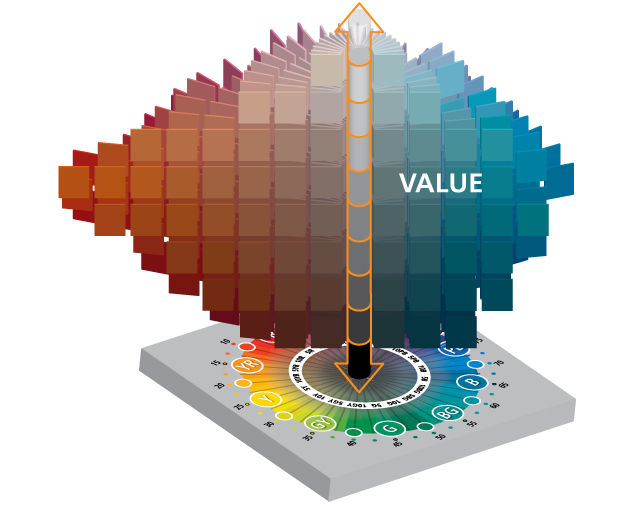
Then you need to provide more clues or experiment more with what that command does in GIMP - or provide examples. You then want to do something ? to affect the Chroma channel, so try -auto-level for now, and then return to sRGB colourspace and save: magick INPUT.PNG -colorspace HCL -channel G -auto-level +channel -colorspace sRGB RESULT.PNG So HSV isnt perceptually uniform with respect to Chroma. I don't know what that command does in GIMP, but you can convert to HCL colourspace in ImageMagick and select the Chroma channel for modification like this: magick INPUT.PNG -colorspace HCL -channel G. The LCh Chroma values for the twelve plotted colors ranges from a low of Chroma53 for sRGB 'cyan' at HSV Hue 180/LCh Hue 196) to a high of Chroma131 for sRGB 'blue' at HSV Hue 240/LCh Hue 301. Philips Hue and Razer give your gaming room a serious wow-factor even when the game is off with preset and custom lighting effects. Then you go back to ImageMagick and apply that CLUT to your image: magick input.png GIMP-H0-C50-L0.png -hald-clut result.pngĪnd I think you'll agree the left side looks pretty similar to the right side of your input image. Then take that file ( clut.png) into GIMP and apply your GIMP processing on it and save the result as GIMP-H0-C50-L0.png so we know how GIMP affects each colour. You would create a HALD-CLUT something like this: magick hald:16 clut.png The method below should allow you to replicate any GIMP filter with ImageMagick - as long as it is a pure "point process", I mean one where each pixel's output value is purely derived from its input value and not an "area process" where surrounding pixels contribute - such as blurring or median filtering, for example. If that doesn't work, or is not to your liking, read on. I got: magick cXDv3.jpg -define modulate:colorspace=LCH -modulate 100,150 result.jpg I think you can get pretty close with -modulate if you go into an LCH colourspace, but I have no idea if it will work consistently. It really depends on what is displayed.Not sure about this at all. Hue would pick a general color in certain areas, but Razer's version of it is pretty much taking one pixel out of the desired area and using that color, which creates that weird unsmooth effect with drastic color changes. Razer Chroma and Hue lights go beyond being a brilliant light show - they provide a full-blown immersive gaming experience. It's pretty neat and quite accurate for the peripherals (my all new Ornata has all its keys and side LEDs react independently), not so much for the Hue accessories it seems : my bulbs have a very staggered response to colors on screen, and a weird choice at that too depending on what is displayed.

Now it's all customizable directly in Studio using the Environment influence layer thing and assign it to your Chroma devices with desired regions of the display.
#CHROMA FOR HUE UPDATE#
That matters not now, there seems to have been an update in Synapse with a Hue integrated system.
#CHROMA FOR HUE FREE#
You're still free to turn off Hue in Synapse and have Visualizer take over, that will leave the bulbs on their own with the Hue app and keep the effect going. TL DR - Hue overrides Synapse layouts in games, is there no fix?Ĭlick to expand.Yep, sorry for the late answer, but I figured right after I made the post like an idiot realizing his misconception. It seems a bit reductive given how much effort Razer has put into having a lot games to have special profiles in them, only to see it overrided by some lightbulbs behind a screen. Synapse Studio doesn't allow anything, given it says that Hue now controls the lighting system. Hue is defined as how most of us perceive and name a color using the colors of the rainbow (red, orange, green, blue, etc.). It's not that bad, but now the whole setup is one color rather than having many little things as it used to be, with what I expected to be just the ambiance lighting from the bulbs to increase immersion. But when I actived the sync with Hue to get the lighting ambiance on top, it overrides that. What really bugs me is that now, my Blackwidow or Firefly don't even do response lighting layouts : for example, when playing Overwatch, you should have a color depending on the character, along some ingame info appearing on the keyboard (cooldowns and effects among others).

And by a everything, I mean both Razer's very lighting profiles but even Hue's own parameters. The 'entertainment mode' from Philips' application, that is meant to adapt depending what happens on your computer (music, video, gaming) seems to override everything. I recently acquired a pack of Philips Hue bulbs, which I immediately set around my monitors, knowing that Synapse can link the technologies.īut after experimenting a bit with the possibilities, it seems there is a major flaw that I havent been able to find a solution to.


 0 kommentar(er)
0 kommentar(er)
